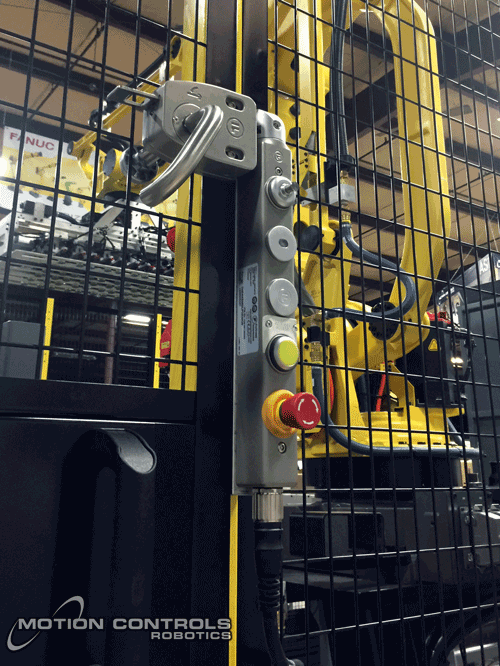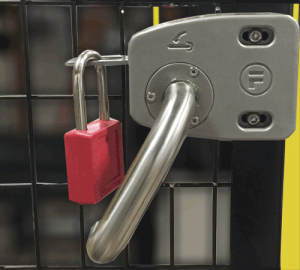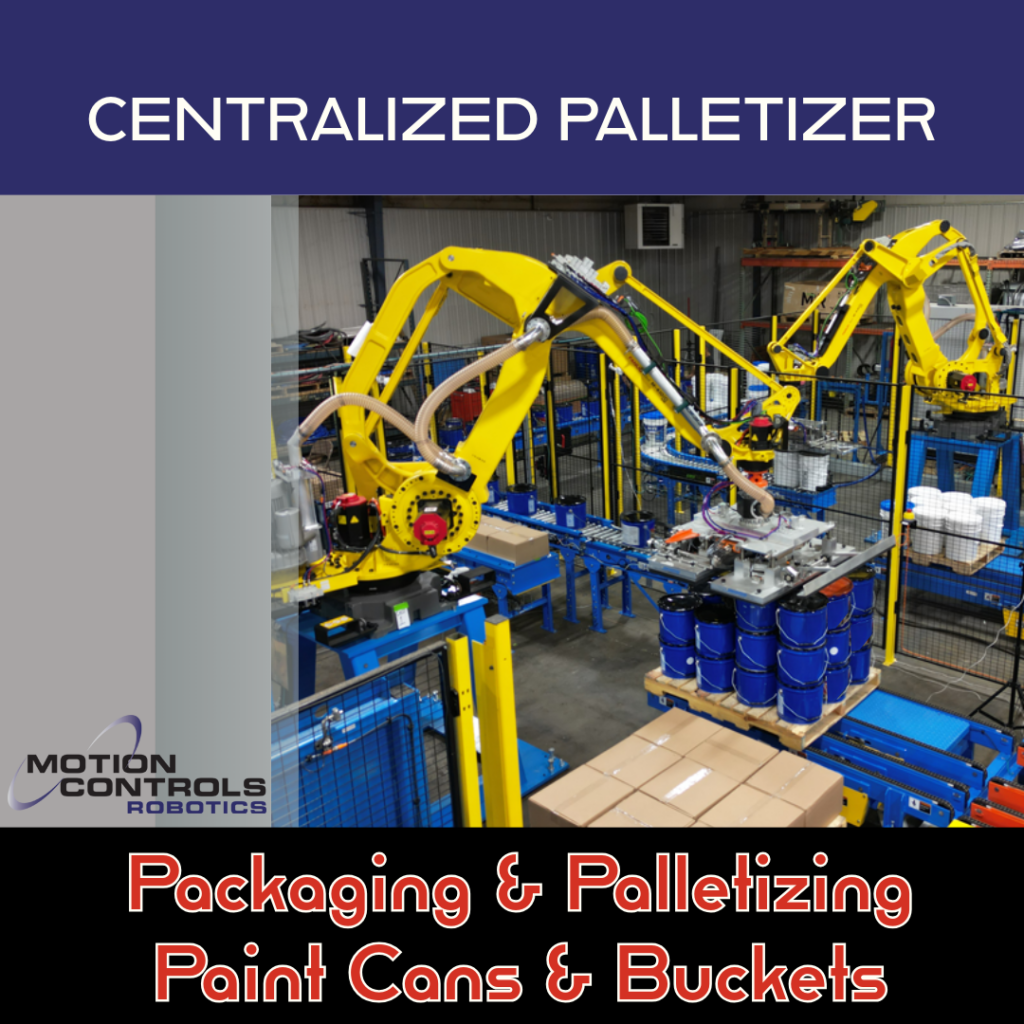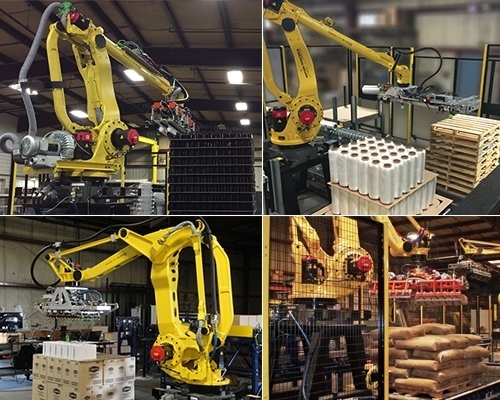The use of industrial robots is becoming more prevalent every year. According to the Robotic Industry Association, 34,606 robots were added to facilities across North America in 2016. With these new robots being added to facilities, it is important to keep safety standards and easy to manage procedures at the forefront when designing robot systems. As a robotic integrator, our job is building robot systems that meet and exceed safety standards. This is accomplished through consistency in developing and using proven safety features.
Safety Fencing for Robot Cells

A safety fence around the robot is used to ensure that operators are protected from coming into contact with the robot while it is moving. The fencing must surround any area the robot can reach and be at a height of at least 5 feet from the walking surface. The operator, at times though, must enter the robot cell for maintenance or other production needs. So all safety fences have to have at least one entry gate.
Entry Gates
Entry gates pose a problem because they allow access to the area where the robot is moving. So every entry to the cell must contain an access controls system, such as an safety interlock switch. A safety interlock switch tells the robot that an operator is entering and signals the robot to stop moving. The entry gates we install on robot cells at Motion Controls Robotics consist of a locking gate switch and a yellow, “Request Access” push button. They feature a locking solenoid and an internal release to prevent an operator from becoming trapped inside the robot cell. This type of switch is both TUV certified and RIA compliant.
How the Safety Interlock Switch on the Gate Works
Below are the steps the operator must take to enter and then leave the robot cell

- Operator pushes the yellow, “Request Access” push button
- Push button begins to flash while the robot comes to a safe stopping point
- Push button stops flashing, remaining lit, as the operator hears the gate switch solenoid release unlocking the gate latch
- It’s now safe for the operator to enter
- Operator uses the handle on the gate to open the door and enter the cell (If required, the gate handle has a lock-out clasp)
- Operator finishes their task inside the cell
- Verifying that no one else is inside the robot cell, the operator exits closing the gate fully
- Operator presses the “Request Access” push button again – the solenoid locks into place
- Robot smoothly starts from the point at which it stopped when the operator first pushed the “Request Access” push button
Watch video to see this process in action
Why is having an safety interlock switch setup important?
The entry gate setup that Motion Controls Robotics uses serves two purposes.
- Keeping the operators protected and safe – The way our gate entrance procedure works provides a safe and functional way of entering the robot cell. The process described above predicts issues that could occur and keeps the operator safe when entering the cell.
- Making sure that stop time for the robot is minimized – By using a locking gate switch with the “Request Access” push button it allows the operator to stop the system at a controlled stopping point to avoid resetting delays and costing valuable time. By doing this we can avoid interrupting the robot’s cycle and allow the operator to enter and exit the protected area safely. The operator should always use this sequence and never try to just open the door during normal operation.
Benefits of Interlock Switches
- Configurable to fit our customer’s specific needs
- Durable, one piece metal case
- Configuration can include an E-Stop
- Can be hard-wired to a safety relay or controlled with AS-I Safe Fieldbus
- Quick connect cables
If Motion Controls Robotics designs and integrates your robotic system, you can be assured that we are using safety interlock switches that can exceed your safety needs and keep your operators safe.




